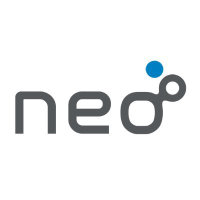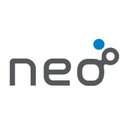
Neo Performance Materials Inc
TSX:NEO


| US |

|
Johnson & Johnson
NYSE:JNJ
|
Pharmaceuticals
|
| US |

|
Berkshire Hathaway Inc
NYSE:BRK.A
|
Financial Services
|
| US |

|
Bank of America Corp
NYSE:BAC
|
Banking
|
| US |

|
Mastercard Inc
NYSE:MA
|
Technology
|
| US |

|
UnitedHealth Group Inc
NYSE:UNH
|
Health Care
|
| US |

|
Exxon Mobil Corp
NYSE:XOM
|
Energy
|
| US |

|
Pfizer Inc
NYSE:PFE
|
Pharmaceuticals
|
| US |

|
Palantir Technologies Inc
NYSE:PLTR
|
Technology
|
| US |

|
Nike Inc
NYSE:NKE
|
Textiles, Apparel & Luxury Goods
|
| US |

|
Visa Inc
NYSE:V
|
Technology
|
| CN |

|
Alibaba Group Holding Ltd
NYSE:BABA
|
Retail
|
| US |

|
3M Co
NYSE:MMM
|
Industrial Conglomerates
|
| US |

|
JPMorgan Chase & Co
NYSE:JPM
|
Banking
|
| US |

|
Coca-Cola Co
NYSE:KO
|
Beverages
|
| US |

|
Walmart Inc
NYSE:WMT
|
Retail
|
| US |

|
Verizon Communications Inc
NYSE:VZ
|
Telecommunication
|
Utilize notes to systematically review your investment decisions. By reflecting on past outcomes, you can discern effective strategies and identify those that underperformed. This continuous feedback loop enables you to adapt and refine your approach, optimizing for future success.
Each note serves as a learning point, offering insights into your decision-making processes. Over time, you'll accumulate a personalized database of knowledge, enhancing your ability to make informed decisions quickly and effectively.
With a comprehensive record of your investment history at your fingertips, you can compare current opportunities against past experiences. This not only bolsters your confidence but also ensures that each decision is grounded in a well-documented rationale.
Do you really want to delete this note?
This action cannot be undone.

| 52 Week Range |
5.67
8.7
|
| Price Target |
|
We'll email you a reminder when the closing price reaches CAD.
Choose the stock you wish to monitor with a price alert.

|
Johnson & Johnson
NYSE:JNJ
|
US |

|
Berkshire Hathaway Inc
NYSE:BRK.A
|
US |

|
Bank of America Corp
NYSE:BAC
|
US |

|
Mastercard Inc
NYSE:MA
|
US |

|
UnitedHealth Group Inc
NYSE:UNH
|
US |

|
Exxon Mobil Corp
NYSE:XOM
|
US |

|
Pfizer Inc
NYSE:PFE
|
US |

|
Palantir Technologies Inc
NYSE:PLTR
|
US |

|
Nike Inc
NYSE:NKE
|
US |

|
Visa Inc
NYSE:V
|
US |

|
Alibaba Group Holding Ltd
NYSE:BABA
|
CN |

|
3M Co
NYSE:MMM
|
US |

|
JPMorgan Chase & Co
NYSE:JPM
|
US |

|
Coca-Cola Co
NYSE:KO
|
US |

|
Walmart Inc
NYSE:WMT
|
US |

|
Verizon Communications Inc
NYSE:VZ
|
US |
This alert will be permanently deleted.
 Neo Performance Materials Inc
Neo Performance Materials Inc
Neo Performance Materials Inc
Investor Relations
Neo Performance Materials, Inc. engages in the manufacture of metal-based functional materials. The company is headquartered in Toronto, Ontario and currently employs 1,844 full-time employees. The company went IPO on 2017-12-05. The firm operates through three business segments: Magnequench, Chemicals & Oxides (C&O) and Rare Metals (RM). Its Magnequench segment is engaged in the production of permanent magnetic powders used in bonded and hot-deformed, fully dense neodymium-iron-boron (NdFeB or neo) magnets. Its C&O segment manufactures and distributes a range of advanced industrial materials. Its applications are used in automotive catalysts, permanent magnetics, consumer electronics, petroleum refining catalysts, medical devices, and wastewater treatment. Its RM segment sources, reclaims, produces, refines, and markets specialty metals and their compounds. Applications from products made in this segment primarily include superalloys for jet engines, medical imaging, wireless technologies and others.

Neo Performance Materials, Inc. engages in the manufacture of metal-based functional materials. The company is headquartered in Toronto, Ontario and currently employs 1,844 full-time employees. The company went IPO on 2017-12-05. The firm operates through three business segments: Magnequench, Chemicals & Oxides (C&O) and Rare Metals (RM). Its Magnequench segment is engaged in the production of permanent magnetic powders used in bonded and hot-deformed, fully dense neodymium-iron-boron (NdFeB or neo) magnets. Its C&O segment manufactures and distributes a range of advanced industrial materials. Its applications are used in automotive catalysts, permanent magnetics, consumer electronics, petroleum refining catalysts, medical devices, and wastewater treatment. Its RM segment sources, reclaims, produces, refines, and markets specialty metals and their compounds. Applications from products made in this segment primarily include superalloys for jet engines, medical imaging, wireless technologies and others.





























 You don't have any saved screeners yet
You don't have any saved screeners yet
